What came first, the word or the poem? And which is which? Coming together from locations all over the world, from Europe, North America, and Asia, over a dozen poets plunged head-first after answers into the murky waters of experimental semiotics. Drawing on sources from runes to javascript, samurai calligraphers to occult mediums, the work that emerged channels a poetry which looks to language as the most fundamental of materials. What follows is a morsel of this, extracted from the coursework generated during Poetry Beyond Semantics: Broken and Unbroken Code. These twelve pieces created during the course, give a glimpse into a collective, open-ended experiment seeking out what language and poetry can be.
Magret Peper – Asemic Bark
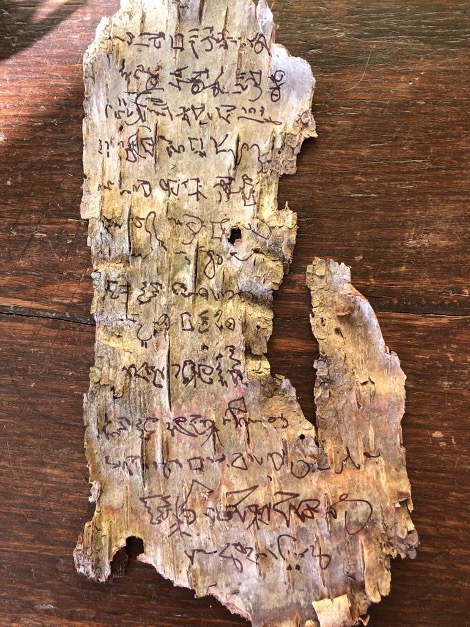
To combine beech tree barks with the conceptual framework of asemic writing made sense for me as the German word “Buchstabe” for letter probably originated from the Germanic runic sticks. These characters, known as runes, were often carved in sticks from the hard and heavy wood of the beech. I aimed for a free-flowing expression of creativity, of divorcing myself from language and meaning. I found that bark and ink pen interacted with each other. There seemed to be figurative ideas behind the surface, leading the ink and my hand.
Jay Whittaker – Erased
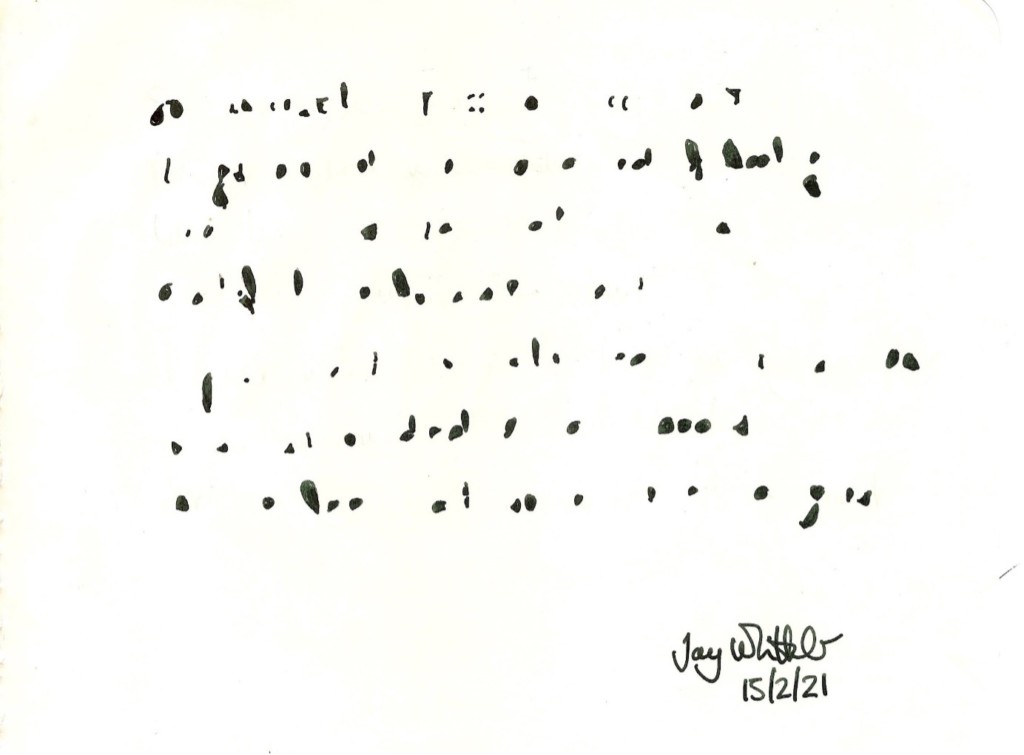
I’m a poet with no artist training, and I chose to work with what’s familiar and to hand – ink, fountain pen, brush pen. Erased is my second attempt at a poem inspired by Mirtha Dermisache’s work. I wrote lines in pencil, then inked in the closed spaces that are intrinsic to how I form my letters – and then rubbed out the pencil words. The original words were ephemeral and are now forgotten.
Elvire Roberts – Remnants of Twig
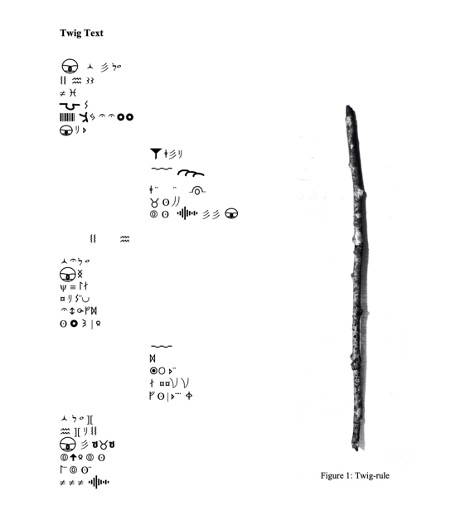
Last Thursday, a twig fell into my rucksack; it spoke to me all the way home. The language of Twig deserves imaginative research. This is what the research unearthed:
The first translation of extant Twig text appears in the 14th century in a document by St Catherine of Siena, blessed with anorexia mirabilis. It is an ecstatic translation dictated to her secretaries corresponding to the ‘infinite love and infinite grief’ cited in St Catherine’s primary work The Dialogue. UNESCO’s Red Book of Endangered Languages lists Twig as a disappearing Branch language. Figure 1 is a holy relic, the object used by St Catherine for deciphering Twig.
Jeanne Cannizzo – The Walrus Flew On A Poached Egg
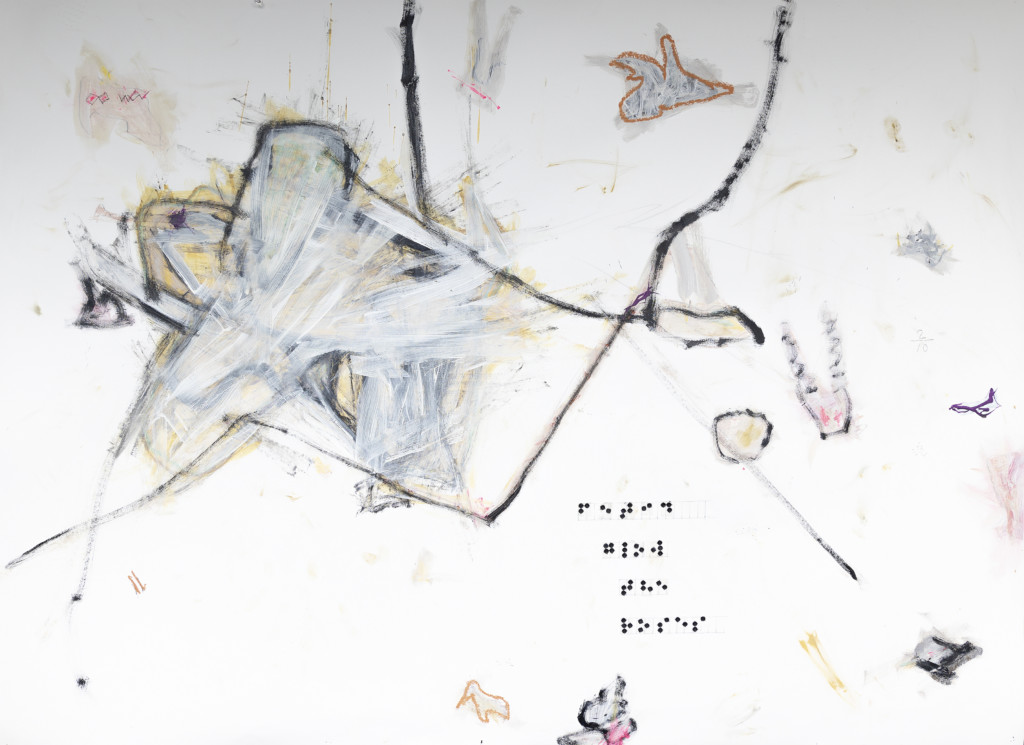
Subject 920: Female, aged 96, professional medium (ret.)
A drawing she calls The Walrus Flew On A Poached Egg, as directed by her spirit helper, an Orca whale. Includes images of shrapnel and improvised explosive devices as well as smudges of muddy footprints. Subject much disturbed by experiences as a field ambulance nurse in the First World War. Hobo signs read: ‘Keep Quiet – barking dogs’; ‘The sky is the limit’; and ‘There are thieves about’. A cloud of mustard gas obscures the walrus; the Braille reads ‘Fetid glow the roses’. She hums the popular song Roses of Picardy (1916).
Sue Wood – Pins Code
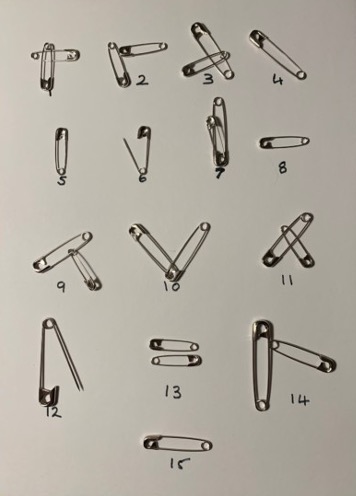
An eighteenth-century document from the ancient Guild of the Aiguilliers de Villeneuve, detailing a system of communication between a master tailor and local seamstresses, was discovered in an elaborate work box recently sold at auction for an undisclosed sum. The seamstresses were almost certainly illiterate, so the ‘petite aiguille’ code was a practical way of indicating corrections needed in the garments. Unfortunately, the document has no key to the positions, the textile department in the V&A is presently undertaking further research. The document above reproduces the 15 positions using modern pins, the actual pins were elaborate and developed their own style according to the region – some even encoding secret messages to the seamstress of an amorous nature.
Agata Maslowska – Digital Haiku
I’m interested in exploring ways of sculpting text into different forms. In this instance, I’ve used one of my haiku poems and translated it using different digital applications and codes. I translated the text into emojis, which I then put through the image caption generator to come up with the emoji translation. I then put both the haiku and the emoji translation through the Melobytes application which transforms text into song/music using a method of procedural generation.
Richard Fox – Dog Dreams
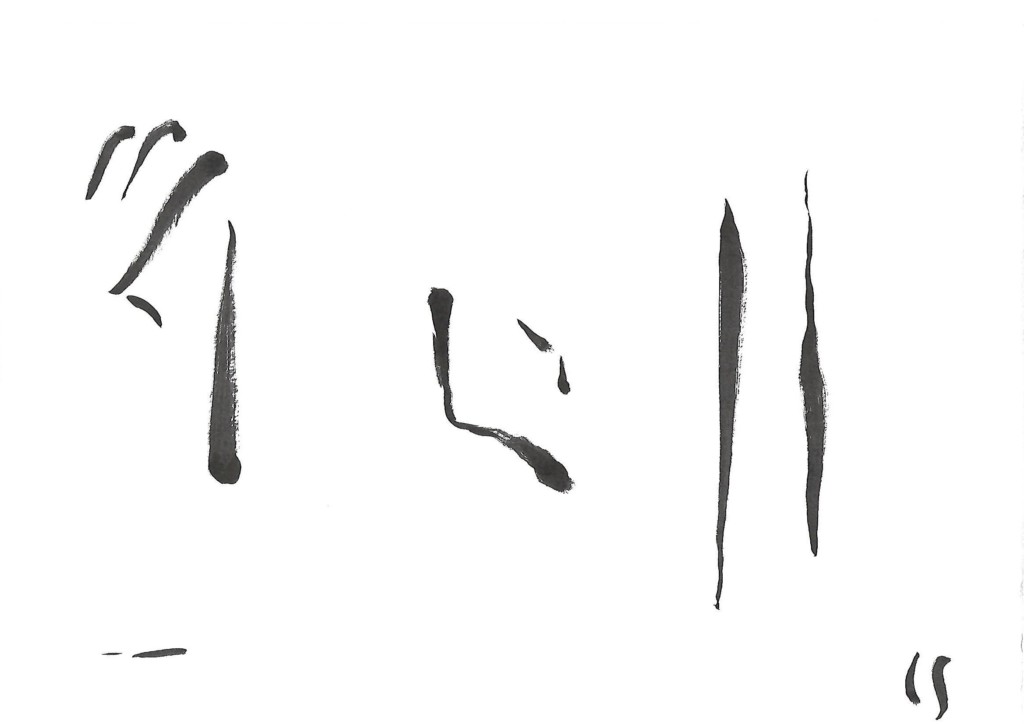
Transliterate the word to a script that speaks; copy with a pen that flows. Contemplate your sleeping daemon; carefully encode each twitch and sound. Let the brush speak the dream.
Nathaniel Chew – dance theory
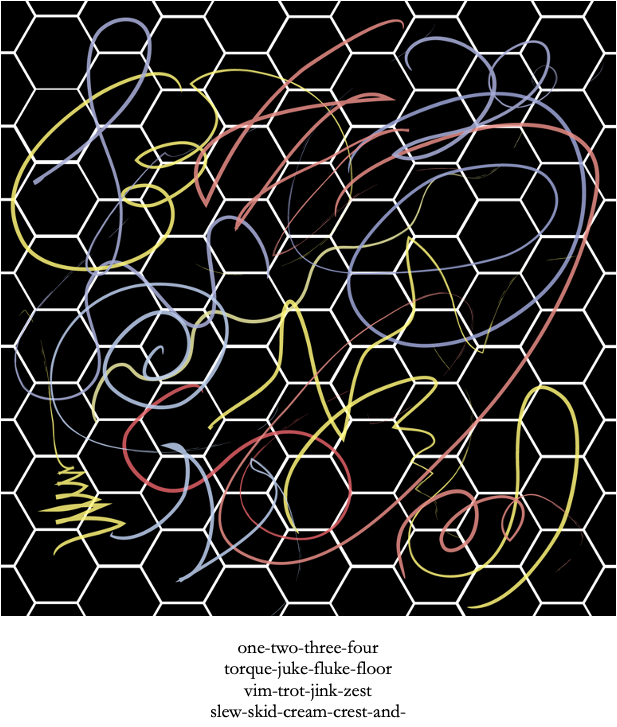
I recently read that the honeybee’s waggle dance was a dying language – evolution was deselecting for it on the grounds of inefficiency. “dance theory” is an embrace of the wonderfully impractical and chaotically communal, appropriating digital efficiency for a doodled map to pollen, somewhere. I cannot speak for the bees, but I will dance with any who wish. May there be whirling room in the choreographies of all our days.
Mindy Zimmerman – Inked
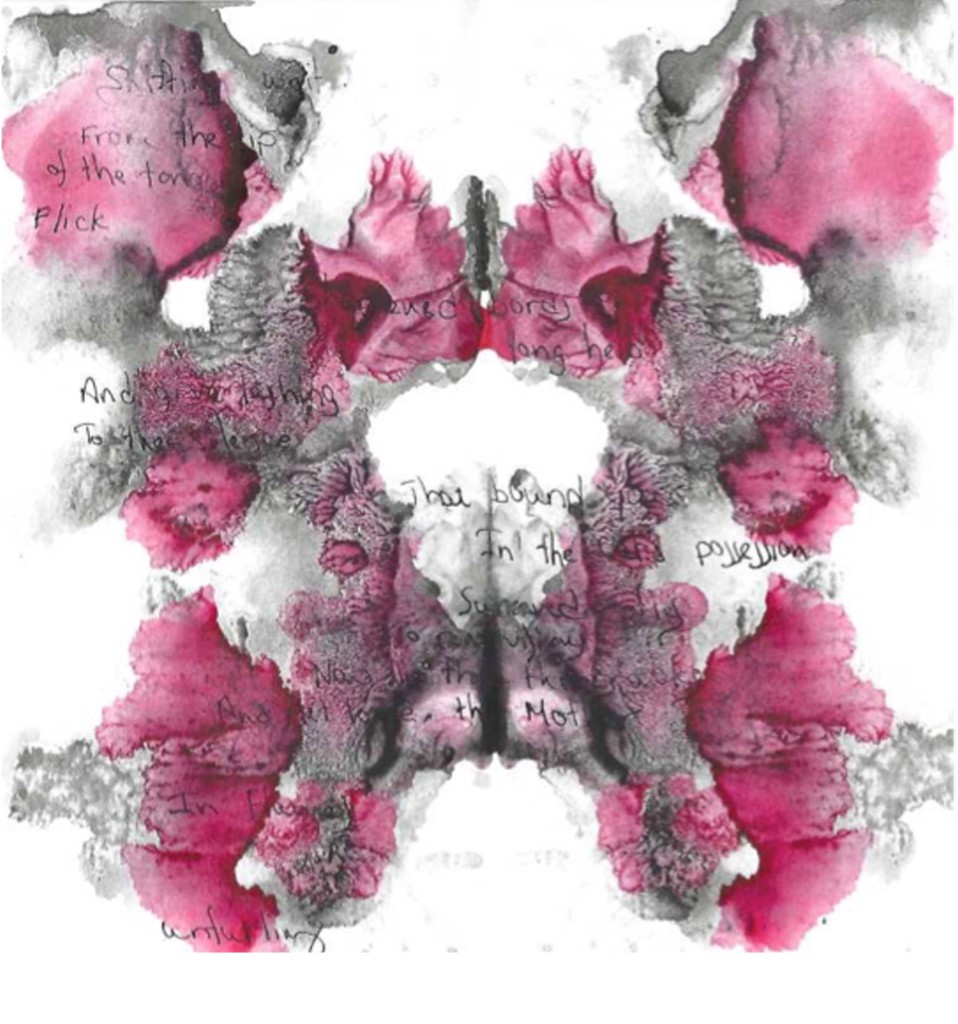
It started with a layer of poem, covered with drips of handmade charcoal ink. Folded and pressed, then inked again. New layers, with store-bought red. Folded and pressed, then inked again. The intent to obscure the original poem with klecksography (making images with inkblots) requires that the viewer decide for themself how to ‘read’ the poem. Some words partially blend with the ink, blurring their collective expression, while others disappear completely beneath happenstance patterns and shapes.
Caroline Stockford – Code Poem
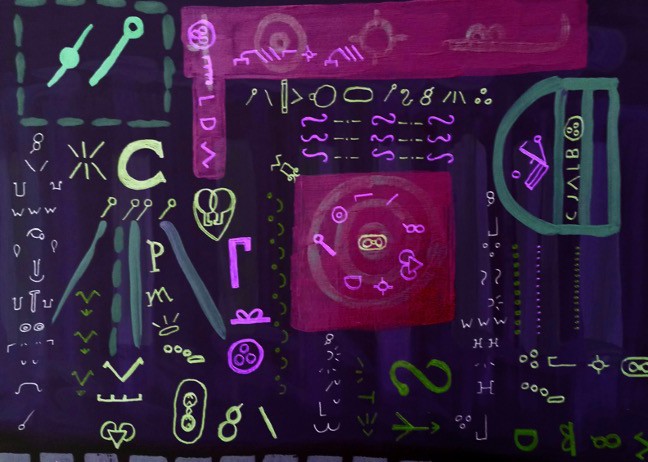
I began this poem by devising a code of symbols to be used between a subject and object in a code sentence/sequence. The symbols represented direction, positive/neutral/negative aspect, intensity, velocity, and accuracy. The subject and object of the sentences were each represented by a new symbol.
Some of the symbols were created by refining a sigil made of the primary consonants in the word in question, some were the representation of a feeling about the subject or object. I painted lines of poetry represented by this code onto card with acrylic paints and marker pen.
Rachel Hale – Dark Code
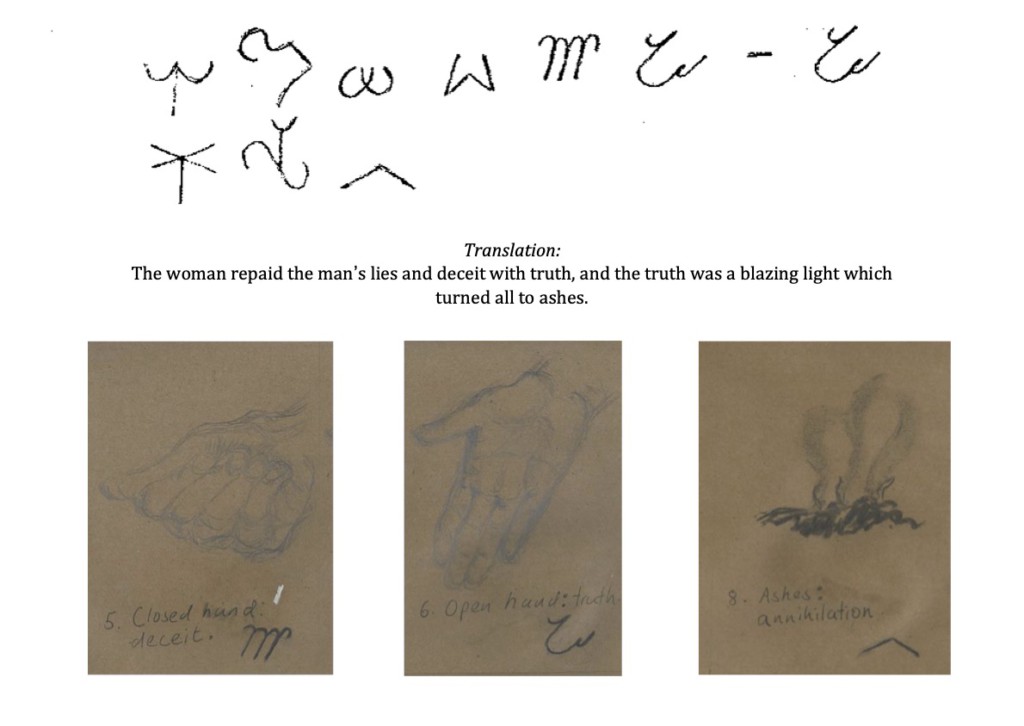
Dark Code is an attempt to access and bring to light thoughts and feelings that are liminal, on the edge of consciousness, or simply unsayable. My process was to conceptualise a series of pictograms, to which I assigned clusters of ideas and emotions. I extrapolated from these to create simple ideograms which I used to create some lines of verse.
The images show the process from drawing the pictogram, to creating a simplified, linear, ideogram.
Photo by Steve Johnson on Unsplash
Add your Reply
You must be logged in to post a comment.